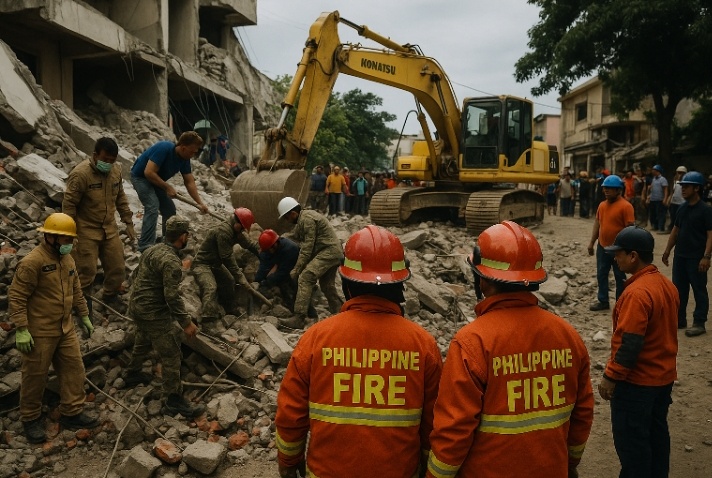A powerful 6.9-magnitude earthquake shook the central Philippines late Tuesday night, leaving a trail of destruction in CEBU province and surrounding areas. At least 69 people have been confirmed dead, with the number expected to rise as search and rescue teams continue operations.
When & Where Did the Earthquake Strike?
The quake struck at 9:59 p.m. local time, with its epicenter recorded near Bogo City in northern Cebu. According to seismologists, the shallow depth of just 10 kilometers intensified the shaking. Within minutes, multiple aftershocks followed, prompting panic as residents fled their homes and buildings.

Authorities initially issued a tsunami warning for coastal communities, but it was later lifted after no unusual wave activity was observed.
Death Toll & Damage Report
Officials confirmed 69 people have been confirmed dead, of fatalities across CEBU province, with Bogo City reporting the highest number of deaths. In San Remigo, a sports complex collapsed during an event, killing several people, including a child and emergency responders.
The neighboring town of Medellin also suffered heavy losses when ceilings and concrete walls gave way. Historic landmarks, including old Churches, crumbled under the impact.
Hospitals were overwhelmed by the surge of injured victims, forcing medical staff to treat patients in parking lots and outdoor tents. Electricity, water supply, and road networks were severely disrupted, complicating rescue efforts.
Rescue & Relief Operations
The Philippine government quickly declared a state of calamity in CEBU, allowing emergency funds to be released. President Ferdinand “BONGBONG” Marcos Jr. extended condolences to families of the victims and pledged full support for recovery operations.
Military units, police, and volunteer rescue groups have been deployed with heavy machinery, sniffer dogs, and medical assistance. Relief efforts are ongoing, with urgent needs including clean drinking water, food packs, shelter, and medical supplies.
Despite the challenges, communities have shown resilience. Volunteers, local officials, and non-government groups are working together to provide aid to the thousands displaced by the disaster.
Why the Philippines Is Prone to Earthquakes
The Philippines sits on the Pacific Ring of Fire, one of the world’s most seismically active regions. Tectonic faults crisscross the archipelago, making the country highly vulnerable to earthquakes, tsunamis, and volcanic eruprions.
This recent CEBU earthquake underscores the urgent need for improved infrastructure, stricter building codes, and community preparedness to minimize loss of life during such events.

The Road to Recovery
With hundreds injured and thousands displaced, recovery will take time and resources. Immediate priorities include:
• Restoring power, water, and communication lines.
• Conducting Structural Assessments of building and bridges.
• providing psychosocial support for survivors.
• Ensuring displaced families have access to safe shelters.
The government has urged vigilance, as aftershocks are expected to continue for days.
A Nation United
In the midst of tragedy, the Filipino spirit of bayanihan—communal unity—has once again shone through. Neighbors are helping one another, local businesses are donating goods, and volunteers are risking their safety to pull survivors from rubble.
While grief is heavy, the Philippines has shown time and again its resilience in the face of natural disasters. The road to recovery will be long, but with unity, the affected communities in Cebu will rebuild stronger.

